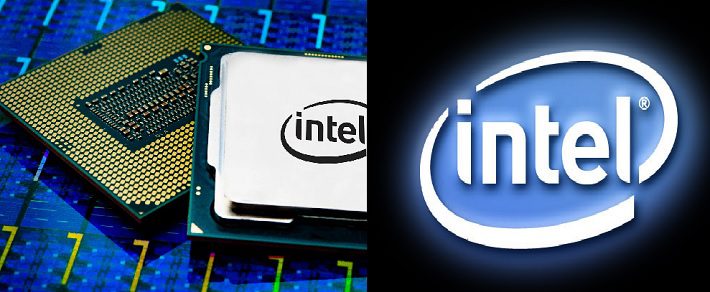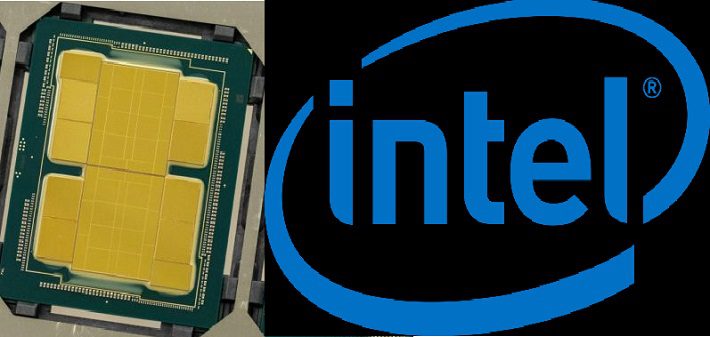Fab 42: Intel Shows Off Next-Gen Chips

The US magazine CNET was given the opportunity to take a look at Intel’s modern Fab 42 in Arizona and to take interesting photos of various chips such as Meteor Lake, Ponte Vecchio, and Sapphire Rapids. This resulted in recordings showing, among other things, test chips from the “Intel 4” node.
Fab 42, which would be under development since 2011, was now operational. The assembly plant, which is the company’s third to be using the company’s newest node, is creating processors utilizing the industry’s 10nm production technologies.
The introduction of a third 10nm capable fab to the fleet might dramatically improve Intel’s product offerings.
Fab 42
Fab 42 had initially intended to be the location wherein Intel’s future 7nm processors will be manufactured. That node’s size was just very forward towards the time, as Intel was also still dealing with 10nm technology, which it only subsequently addressed only with the introduction of Alder Lake.
Now, Fab 42 is hard at work creating the industry’s next-generation goods, and it’s using Extended Ultraviolet Photolithographic, or EUV, precisely as experts anticipated four years ago. This 7nm process is commonly called Intel 4, with the 4 denoting the system of measurement underneath the nanometer, angstroms.
An angstrom is equal to 100 picometers, while a nanometer is equal to 1000 picometers. Alder Lake was created using Intel’s Infinium 10nm technology.
The Third 10nm Fab
Intel has three manufacturing sites in Israel, Oregon, and Arizona that can build chips and use its 10 nm processes and technologies (2nd generation 10nm used for Ice Lake, Ice Lake-SP, Elkhart Lake, Snow Ridge, and 3rd generation 10nm Super Fin used it for Tiger Lake and DG1).
Because Fab 42 in Arizona remained awaiting orders for 10nm CPUs to kick up, the business built all of its 10nm goods so far in Oregon or Israel.
It included a peek at the industry’s Meteor Lake processors, which were introduced in 2023. These 14th-generation chips are notable since they’re the inaugural customer- CPUs when using a completely new chipset architecture, rather than the monolith implemented in the design in prior generations.
Read Also:-
- A Flaw In MediaTek Audio Chips Could Have Exposed Android User’s Conversations
- MediaTek Wants to Make Chips For ARM Based Windows PCs
- Google Tensor Chip: Google Making Its Own Mobile Chip
This is a significant departure for Intel, but then as nodes shrink, AMD nowadays and Intel are focusing on developing with the intention and packaging as a means of enhancing efficiency in their next-generation products. Feverous innovation would be used in Intel’s forthcoming Meteor Lake to arrange chip lets horizontally rather than edge.
Tech power up was showed chips that didn’t have working processor circuits.
Intel’s huge Ponte Vecchio processor, which has been meant to power the Department of Energy’s Aurora supercomputer, is another significant showing. Using 47 distinct chip lets interconnected horizontally with Integrated Multi-Die Interconnection Bridges (EMIB) and horizontally with Foveros layering, the chip incorporates each next technique Intel is actively exploring.
Intel’s decision to provide reporters access to its operations appears to be part of a multi-year strategy to reclaim its status as a technical powerhouse, which it has recently passed away to rival TSMC.
Intel has disappeared above and beyond to say it sincerely hopes to reclaim Apple’s business by offering its silicon manufacturing services to companies, which has now been doing under the moniker Intel Foundry Provider but has also disappeared above and beyond to say it sincerely hopes to reclaim Chipzilla’s CPUs, which is something the technology giant legendarily ditched in favors of TSMC.
Read Also:-
The same could be said for AMD, which went to TSMC for its most recent CPUs. Intel is now going to ramp up two new fabs in Arizona — Fab 52 and 62 — location undisclosed as far — as a demonstration of its dedication to reclaiming the title of technological superiority, according to Computer World.
Nevertheless, It is an interesting insight into Intel’s processes, and the accompanying picture viewer should not be overlooked.

Next-Generation Chips
The chips for another creation of computer processing units from the Xeon sequence of data centers underneath the code name Sapphire Rapids are produced in Fab 42, of the kind that Intel calls ASH (“Automated Super Highway”), in the “Intel 7” node, where it is seen to be four CPU tiles for every package and 15 cores per CPU tile that share information with each other through EMIB.
Xeon computers based on Sapphire Rapids are projected to offer 60 cores in a standalone product during the first half of 2022. From 2022 onwards, Dell, for example, will provide the first Sapphire Rapids systems for future US computing systems used to simulate atomic arms. By 2025, the systems will have been greatly extended and will eventually provide a capability.
CNET was indeed ready to obtain photographs of something like the actual Sapphire Rapids chip sets as they came off the assembly line. This option is particularly intriguing for CPUs, as evidenced by the fact that various additional chips for computer chips are always “off from the roll” in motherboard manufacturing.
Intel Foundry IDM 2.0 Service
Pat Gelsinger, the CEO of Intel, detailed the company’s future strategy. The growth of device fabrication is in the foreground; Intel would spend a total of 20 billion to develop two new facilities and update the fab in Ireland to 7 nanometers.
Fab 42 in Arizona, which now employs over 12,000 people, is being enlarged as part of something like the Intel Foundry IDM 2.0. Two additional buildings, Fab 52 and Fab 62, have also been added.
Qualcomm, for example, relies on processors in the Intel 20A (“2 nm”) production stage, which could be ready as early as 2024 and will feature Gate All Around (GAA) for the very first time.
What Is A Fab At Intel?
In the following years, Intel plans to develop and over a dozen more fabs. Users feel both humbled and huge as they stroll among some of the enormous machinery inside an Intel chip facility. Swallowed up because certain factories, known as fabs, are massive structures spanning dozens of acres.
How Much Fab Does Intel Have?
Intel operates 15 wafer fabs in ten locations across the world. Manufacturing or industrial activities are handled by almost half of the personnel. Chandler, Arizona is one of our fab manufacturing facilities in the United States.






